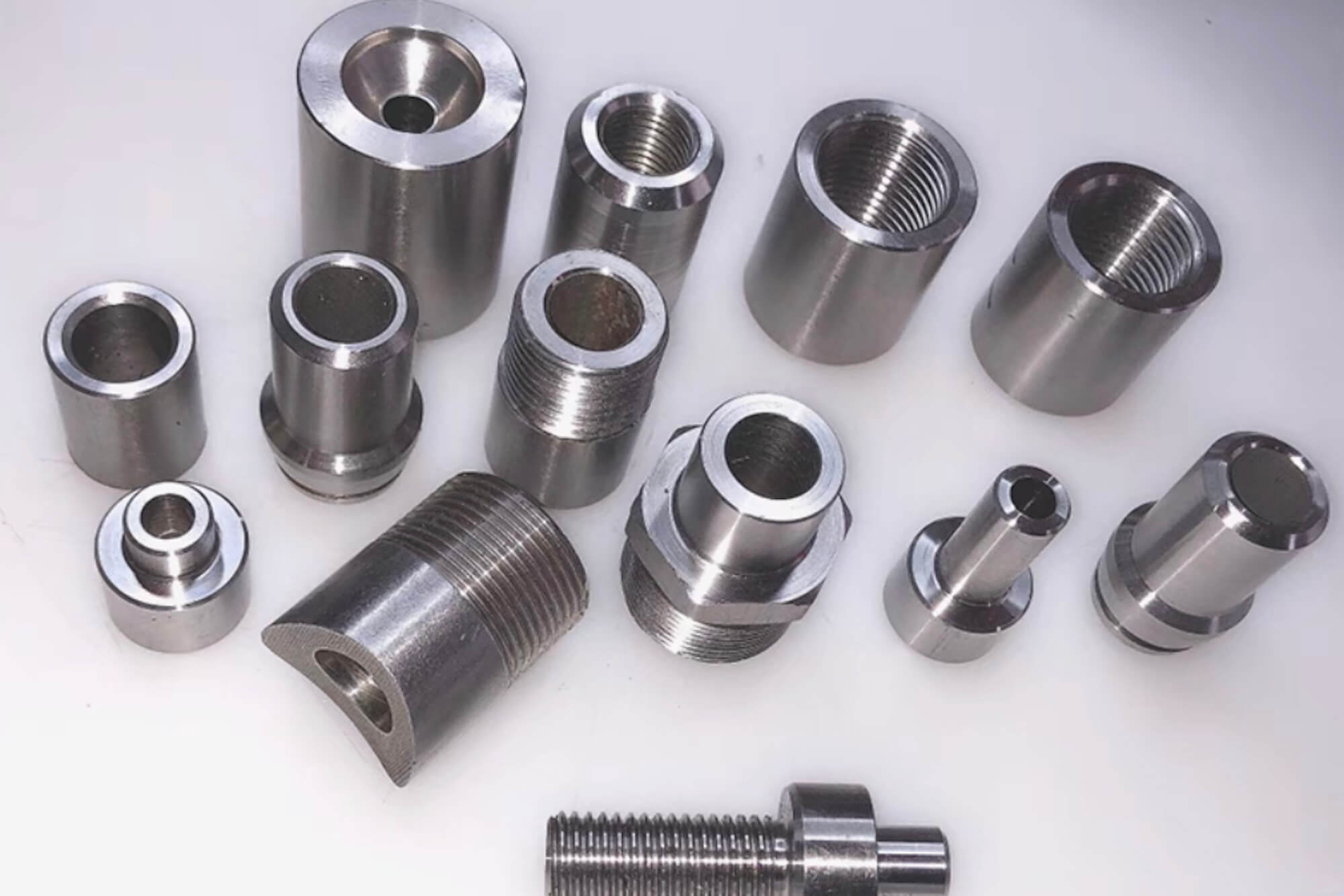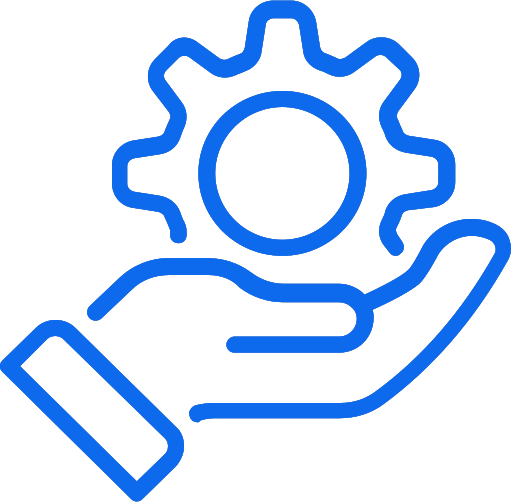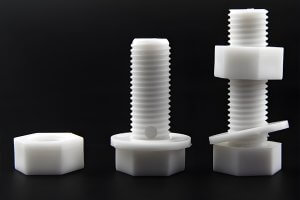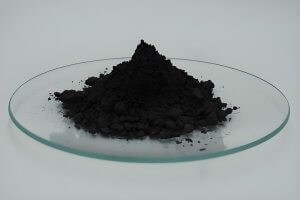Introduction to 316L Stainless Steel in CNC Machining
When I first encountered 316L stainless steel, I was struck by its versatility and exceptional properties. It’s not just another stainless steel variant—it’s one of the most reliable materials for applications that demand corrosion resistance, durability, and precision. But as I’ve learned through my experience, machining 316L stainless steel presents unique challenges that require specific strategies to achieve the best results.
316L stainless steel is an austenitic alloy with a low carbon content (hence the “L”), designed to improve resistance to intergranular corrosion after welding. Its composition includes chromium, nickel, and molybdenum, which contribute to its strength and ability to withstand harsh environments like saltwater, acidic conditions, and extreme temperatures. This makes it a go-to material for industries like aerospace, medical devices, marine engineering, and even luxury goods.
While its advantages are undeniable, CNC machining 316L stainless steel isn’t a straightforward process. Its low thermal conductivity can lead to heat buildup, and its tendency to work harden during cutting makes tool selection and process optimization critical. In this article, I’ll share insights and techniques I’ve found effective for machining 316L stainless steel using CNC technology.
Preparing for CNC Machining of 316L Stainless Steel
Preparation is half the battle when it comes to machining 316L stainless steel. Choosing the right tools, coolants, and setup can make or break your machining project. Here are some key steps to ensure success:
Tool Selection for 316L Stainless Steel
Not all tools are created equal, and this is particularly true when machining materials like 316L stainless steel, which is known to cause rapid tool wear. From my experience, these are the most reliable choices:
| Tool Material | Recommended Coating | Advantages |
|---|---|---|
| Carbide (solid or inserts) | TiAlN or AlTiN | High heat resistance, durability |
| Ceramic | None or SiAlON-based | Handles extreme heat, good for roughing |
| High-speed steel (HSS) | TiCN or TiN | Cost-effective, better for low-speed applications |
I often opt for solid carbide tools with a TiAlN coating for their ability to handle the heat generated during high-speed CNC machining. These tools perform well under aggressive conditions and offer excellent durability.
Coolants and Lubrication Strategies
One of the challenges I’ve faced with 316L stainless steel is its low thermal conductivity, which can cause significant heat buildup at the cutting edge. Effective cooling is essential to manage this. Here are my go-to cooling strategies:
- Flood Coolant: The most common method for CNC machining. I recommend using a water-based coolant with additives specifically designed for stainless steel to reduce friction and heat.
- High-Pressure Coolant (HPC): For deep drilling or heavy milling, HPC systems are invaluable in flushing chips away and cooling the cutting zone.
- MQL (Minimum Quantity Lubrication): This eco-friendly method works well for light operations and reduces waste compared to flood cooling.
Understanding Work Hardening and How to Minimize It
Work hardening is one of the biggest challenges when machining 316L stainless steel. It occurs when the material hardens as it is cut, making subsequent passes more difficult. To mitigate this:
- Use sharp tools and replace them as soon as signs of wear appear.
- Avoid light cuts; instead, aim for a consistent depth of cut to stay below the hardened layer.
- Maintain continuous cutting action to prevent the tool from rubbing against the material.
With proper preparation, you can significantly reduce downtime and tool wear, leading to more efficient machining operations.
Tips for CNC Machining 316L Stainless Steel
Machining 316L stainless steel requires precision and attention to detail. Over the years, I’ve developed a checklist of tips that ensure consistent and high-quality results:
Cutting Parameters for Optimal Results
The right cutting parameters can make all the difference. Here’s a quick reference table based on my trials with CNC mills and lathes:
| Operation | Cutting Speed (SFM) | Feed Rate (IPT) | Depth of Cut |
|---|---|---|---|
| Milling | 100-180 | 0.002-0.004 | Light to medium |
| Drilling | 50-100 | 0.002-0.005 | Moderate |
| Turning | 150-250 | 0.002-0.006 | Consistent depth |
Best Practices for Specific Operations
1.Milling:
- Use climb milling to reduce cutting forces and prevent work hardening.
- Opt for smaller stepovers to improve surface finish.
2.Drilling:
- Employ peck drilling cycles to reduce chip buildup and avoid overheating.
- Use short, high-quality drill bits with a proper cutting edge angle (118-135°).
3.Turning:
- Maintain consistent feed rates to prevent tool rubbing.
- Use inserts with positive rake angles for smoother cutting.
Surface Finishing Techniques
Achieving a smooth surface finish is crucial for components like medical implants or luxury goods. Here are my finishing tips:
- Use finer feed rates during the final pass.
- Apply a deburring tool to eliminate sharp edges.
- Consider using abrasive polishing pads or buffing wheels for mirror finishes.
By combining these techniques, I’ve been able to consistently achieve high-quality finishes on 316L stainless steel parts.
Solving Common Problems When Machining 316L Stainless Steel
No matter how well-prepared you are, machining 316L stainless steel often presents challenges that require quick thinking and the right strategies to overcome. Here are the most common problems I’ve encountered and the solutions that have worked for me.
1. Work Hardening: Causes and Solutions
One of the biggest issues when machining 316L stainless steel is work hardening. This phenomenon occurs when the material hardens as it’s being cut, making subsequent passes more difficult and accelerating tool wear.
Causes of Work Hardening:
- Using dull or worn tools.
- Cutting with insufficient depth, causing the tool to rub rather than cut.
- Excessive heat buildup, altering the material’s properties.
Solutions:
- Sharp Tools: Always use sharp, high-quality tools and replace them at the first sign of wear.
- Optimal Depth of Cut: Ensure that the depth of cut is sufficient to penetrate the hardened layer, typically 0.02-0.04 inches per pass.
- High Feed Rates: Use higher feed rates to minimize the amount of time the tool spends rubbing against the material.
2. Heat Buildup: Managing Thermal Issues
Heat is another significant challenge when machining 316L stainless steel, due to its low thermal conductivity. If not managed properly, heat buildup can lead to poor surface finishes, tool wear, and even material deformation.
Solutions to Heat Management:
- Coolant Application:
- Use flood cooling or high-pressure coolant systems to dissipate heat efficiently.
- Ensure the coolant reaches the cutting zone consistently to avoid hot spots.
- Cutting Parameters:
- Reduce cutting speed while maintaining an aggressive feed rate to control heat generation.
- Limit prolonged engagement between the tool and the material to allow heat dissipation.
- Tool Coatings:
- Use tools with heat-resistant coatings such as TiAlN or AlTiN to protect the cutting edge from thermal degradation.
3. Tool Wear: Causes and Prevention
The high strength of 316L stainless steel can wear out tools quickly, especially when machining at high speeds. Over time, worn tools can lead to poor surface finishes and increased cycle times.
Solutions to Prevent Tool Wear:
- Material-Specific Tools: Invest in tools specifically designed for machining stainless steel.
- Regular Tool Changes: Monitor tool performance and replace tools proactively before significant wear occurs.
- Chip Management: Use chip breakers and high-pressure coolant to remove chips effectively, reducing tool contact and wear.
4. Surface Quality: Achieving Precision and Finish
The final surface quality is critical, especially for applications in medical devices or luxury goods. 316L stainless steel can be prone to rough finishes if machining parameters are not optimized.
Tips for High-Quality Surface Finishes:
- Use smaller stepovers during milling operations.
- Optimize cutting speeds and feed rates during finishing passes.
- Use polishing compounds or abrasive tools to remove any machining marks.
Data Table: Common Problems and Solutions
| Problem | Cause | Solution |
|---|---|---|
| Work Hardening | Dull tools, light cuts | Use sharp tools, increase depth of cut |
| Heat Buildup | Low thermal conductivity | Flood cooling, reduce cutting speed |
| Tool Wear | High material strength | Use coated tools, replace tools proactively |
| Poor Surface Finish | Incorrect feed or speeds | Optimize parameters, use fine polishing methods |
Cost Optimization in CNC Machining of 316L Stainless Steel
Machining 316L stainless steel can be expensive due to material costs, tool wear, and extended cycle times. However, with the right strategies, it’s possible to optimize costs without compromising quality.
1. Reducing Material Waste
Material costs can account for a significant portion of your budget, especially when working with premium alloys like 316L stainless steel.
Strategies to Reduce Waste:
- Efficient Nesting: Use nesting software to optimize the arrangement of parts on the material to minimize waste.
- Reuse Scrap: Collect and recycle scrap material where possible to offset material costs.
2. Balancing Quality and Efficiency
Quality often comes at a price, but over-processing can unnecessarily increase costs.
Solutions for Cost-Quality Balance:
- Use high-speed machining techniques for roughing and slower speeds for finishing to save time.
- Employ automated quality control systems to detect defects early and reduce rework.
3. Batch Production vs. Custom Parts
The scale of production plays a significant role in cost. Large-scale production spreads the cost of setup, while custom parts often require more time and precision.
Cost Comparison:
| Parameter | Small Batch Production | Large Batch Production |
|---|---|---|
| Setup Cost | Higher per unit | Spread across units |
| Tool Wear | Moderate | Higher due to extended runs |
| Customization Flexibility | High | Limited |
4. Case Studies: Cost-Saving Examples
- Marine Components: By using HPC systems, I reduced heat buildup during milling operations, extending tool life by 25%.
- Medical Implants: Implementing precision polishing methods reduced surface finishing time by 30%, saving costs while maintaining high-quality standards.
Real-Life Applications of CNC Machined 316L Stainless Steel
The versatility of 316L stainless steel means it finds use across multiple industries. Here are some real-world examples of how CNC machining has unlocked its potential:
- Medical Devices:
Surgical tools and implants rely on the biocompatibility and corrosion resistance of 316L stainless steel. CNC machining ensures the precision needed for implants like bone screws and dental posts. - Marine Engineering:
Parts like propeller shafts and underwater fittings require the high corrosion resistance of 316L stainless steel, especially in saltwater environments. - Luxury Goods:
High-end watches and jewelry use CNC machining to achieve the polished, mirror-like finish that 316L stainless steel is known for.
Best Practices for Machining 316L Stainless Steel
After working extensively with 316L stainless steel, I’ve come to appreciate both its benefits and challenges. It’s a material that demands precision and thoughtful planning but rewards those efforts with exceptional durability, corrosion resistance, and versatility across industries. Here’s a summary of best practices for CNC machining 316L stainless steel:
Key Takeaways
- Preparation is Critical:
- Invest in high-quality tools and coatings, such as carbide with TiAlN, to handle the heat and wear associated with machining 316L.
- Set up your machine with the appropriate cooling systems, such as flood cooling or high-pressure coolant, to manage heat buildup.
- Optimize Cutting Parameters:
- Always choose the right speed, feed, and depth of cut for your operation.
- Avoid shallow cuts and excessive rubbing, which can lead to work hardening and tool wear.
- Handle Challenges Proactively:
- Address common issues like heat buildup, tool wear, and poor surface finishes through strategic planning.
- Use data-driven decisions to adjust parameters when encountering issues during machining.
- Balance Quality and Cost:
- Use efficient nesting strategies and consider small-batch vs. large-scale production trade-offs.
- Apply finishing processes thoughtfully to reduce time without compromising the final product quality.
Future Trends in Machining 316L Stainless Steel
As CNC machining technology continues to evolve, innovations like AI-driven monitoring, robotic automation, and advanced tool coatings will further simplify the machining of challenging materials like 316L stainless steel. These advancements will help improve efficiency, reduce costs, and enable even more intricate designs.
For industries ranging from aerospace to luxury goods, the ability to machine 316L stainless steel effectively ensures that it remains a cornerstone material for decades to come.
FAQ
- What makes 316L stainless steel different from 316 stainless steel?
The primary difference is the lower carbon content in 316L (≤0.03%), which reduces the risk of intergranular corrosion, especially after welding. This makes 316L better for applications requiring high corrosion resistance. - What tools are best for machining 316L stainless steel?
Solid carbide tools with TiAlN or AlTiN coatings are ideal for their heat resistance and durability. Ceramic tools can also be used for roughing operations at high speeds. - How can I prevent work hardening when machining 316L?
Use sharp tools, avoid light cuts, and maintain consistent cutting action. Increasing the feed rate can also help prevent tool rubbing, which causes work hardening. - What coolants work best with 316L stainless steel?
Water-soluble cutting fluids with anti-wear additives are commonly used. For heavy-duty operations, high-pressure coolant systems are highly effective in managing heat and chip removal. - Can entry-level CNC machines handle 316L stainless steel?
While possible, machining 316L on entry-level CNC machines may result in slower operations, higher tool wear, and suboptimal finishes. Investing in industrial-grade CNC machines is recommended for consistent results. - How do I achieve a mirror finish on 316L stainless steel?
Use fine abrasive tools, followed by buffing wheels or polishing compounds. Ensure the workpiece is free from machining marks before polishing. - Is 316L stainless steel suitable for high-volume production?
Yes, but optimizing the machining process is essential. Consider tool life, coolant systems, and automation to reduce costs and improve efficiency. - What industries use CNC-machined 316L stainless steel the most?
Medical devices, marine engineering, aerospace, food processing, and luxury goods heavily rely on CNC machining of 316L stainless steel due to its strength, corrosion resistance, and biocompatibility. - What are the most common mistakes when machining 316L stainless steel?
Using improper cutting parameters, neglecting heat management, and failing to replace worn tools are common errors that can compromise results. - What is the recommended cutting speed for machining 316L stainless steel?
Cutting speeds typically range from 100–180 SFM for milling, 50–100 SFM for drilling, and 150–250 SFM for turning. Adjust speeds based on the operation and tool type. - How do I reduce material waste when machining 316L?
Use nesting software to optimize material usage and ensure minimal scrap. Recycle unused material whenever possible. - What factors influence the cost of machining 316L stainless steel?
Material costs, tool wear, machining time, and the complexity of the design are key factors. Optimizing these can help reduce costs. - Can 316L stainless steel be welded after machining?
Yes, it’s highly weldable, especially due to its low carbon content, which reduces the risk of cracking or corrosion at the weld joints. - What finishing options are available for CNC-machined 316L stainless steel?
Options include brushing, mirror polishing, bead blasting, and passivation, depending on the application. - What challenges should I expect with deep hole drilling in 316L?
Heat buildup and chip evacuation are the primary challenges. Use peck drilling cycles and high-pressure coolant to manage these issues effectively.
Closing Thoughts
Machining 316L stainless steel is an art that blends precision, patience, and the right tools. By following the tips and strategies outlined in this guide, you can tackle the challenges of machining this material and produce high-quality parts for a range of industries.
If you’re considering machining 316L stainless steel or need assistance optimizing your process, feel free to reach out—I’d be happy to share further insights or discuss specific scenarios.
Other Articles You Might Enjoy
- Comprehensive Guide to CNC Machining: Carbon Steel vs Stainless Steel
Choosing the right material for CNC machining is a crucial decision for any manufacturer or engineer. Two of the most commonly used materials in various industries are carbon steel and…
- Cracking the Code to Stainless Steel in CNC Machining A Complete Guide to Tools and Techniques
Stainless steel is a go-to material in industries ranging from aerospace to medical devices, thanks to its corrosion resistance, strength, and aesthetic appeal. However, these same properties can make it…
- What Material Properties Need to Be Considered When CNC Machining Stainless Steel Flanges?
The CNC machining of stainless steel flanges requires a profound understanding of the material's properties to ensure high-quality, precision outcomes. This article delves into the critical material properties that impact…
- Fast CNC Machining Services for Stainless Steel Prototyping
CNC Machining and Stainless Steel in Prototyping Computer Numerical Control (CNC) machining is a critical process in the manufacturing sector, particularly for prototyping projects. It's an automated method that uses…
- Key Insights into Plasma Cutting Stainless Steel and Its Perfect Fit with CNC Machining
Introduction Plasma cutting has long been a go-to method for efficiently cutting stainless steel and other conductive metals. When combined with CNC machining, this process becomes even more powerful and…
- Applications of 18/10 Stainless Steel in CNC Precision Engineering
Why 18/10 Stainless Steel and CNC Precision Engineering Are a Perfect Match When exploring materials for precision manufacturing, 18/10 stainless steel consistently stands out as one of the most versatile…






